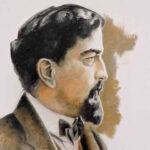Bard Music Festival
Program Eleven: The Spectacular Legacy of Rimsky-Korsakov
August 19, 2018
Bard Music Festival
August 19, 2018


1 pm Preconcert Talk: Richard Wilson
1:30 pm Performance
Igor Stravinsky (1882–1971)
Firebird (1910; trans. Guido Agosti, 1928)
Danse infernale—Berceuse—Finale
Andrey Gugnin, piano
Ottorino Respighi (1879–1936)
From Five Pieces, for violin and piano (1906)
No. 4 Berceuse
No. 5 Humoresque
Min-Young Kim, violin
Brian Zeger, piano
Claude Debussy (1862–1918)
Symphony in B Minor, for piano four hands (1880–81)
Fei-Fei and Piers Lane, piano
Lazare Saminsky (1882–1959)
Hebrew Rhapsody, for violin and piano, Op. 3, No. 2 (c. 1923)
Min-Young Kim, violin
Brian Zeger, piano
Mikhail Gnesin (1883–1957)
Requiem, for piano quintet, Op. 11 (c. 1913)
Members of the Daedalus Quartet with Karen Kim, violin
Brian Zeger, piano
Sergei Prokofiev (1891–1953)
From Ten Pieces for Piano, Op. 12 (1906–13)
No. 7 Prelude
Andrey Gugnin, piano
Alexander Tcherepnin (1899–1977)
From Bagatelles for Piano, Op. 5 (1912–18)
No. 1 Allegro marciale
No. 8 Allegro
No. 10 Presto
Allegra Chapman ’10, piano
Nikolai Myaskovsky (1881–1950)
Cello Sonata No. 2 in A Minor, Op. 81 (1948–49)
Allegro Moderato
Andante cantabile
Allegro con spirito
Nicholas Canellakis, cello
Piers Lane, piano
Estimated run time: 90 minutes, no intermission.